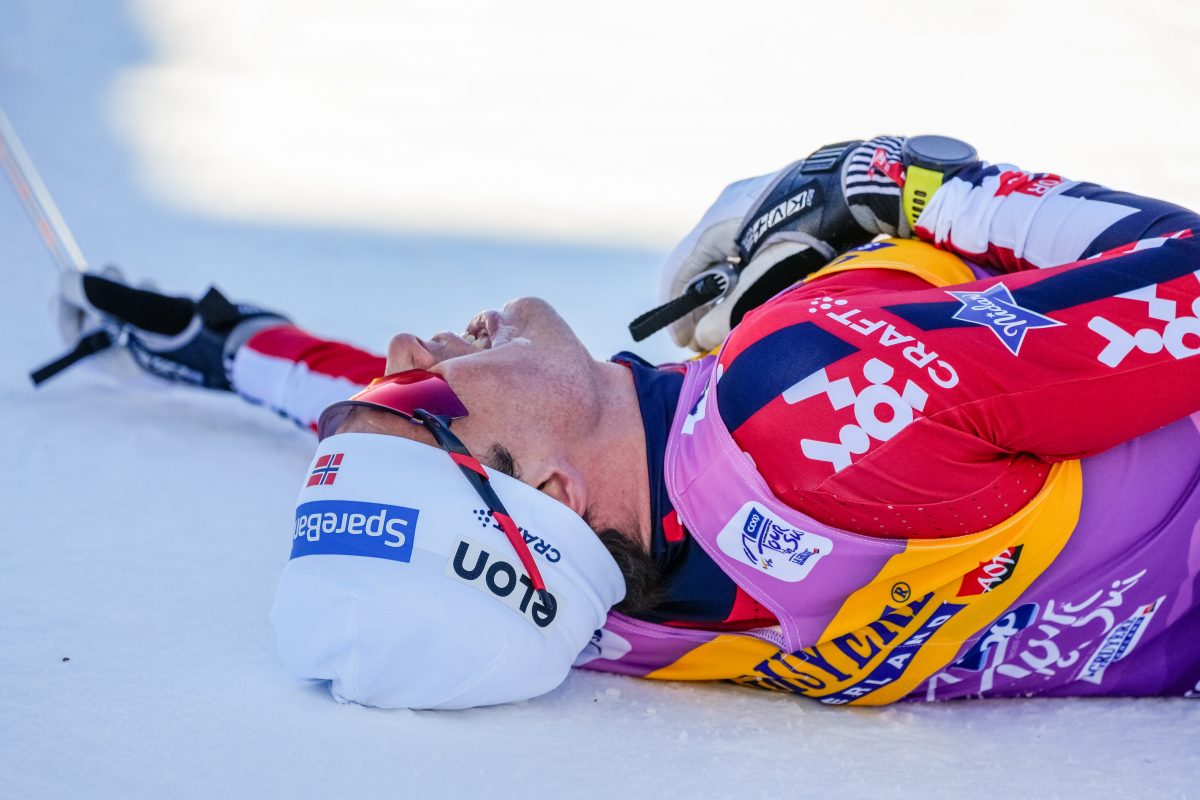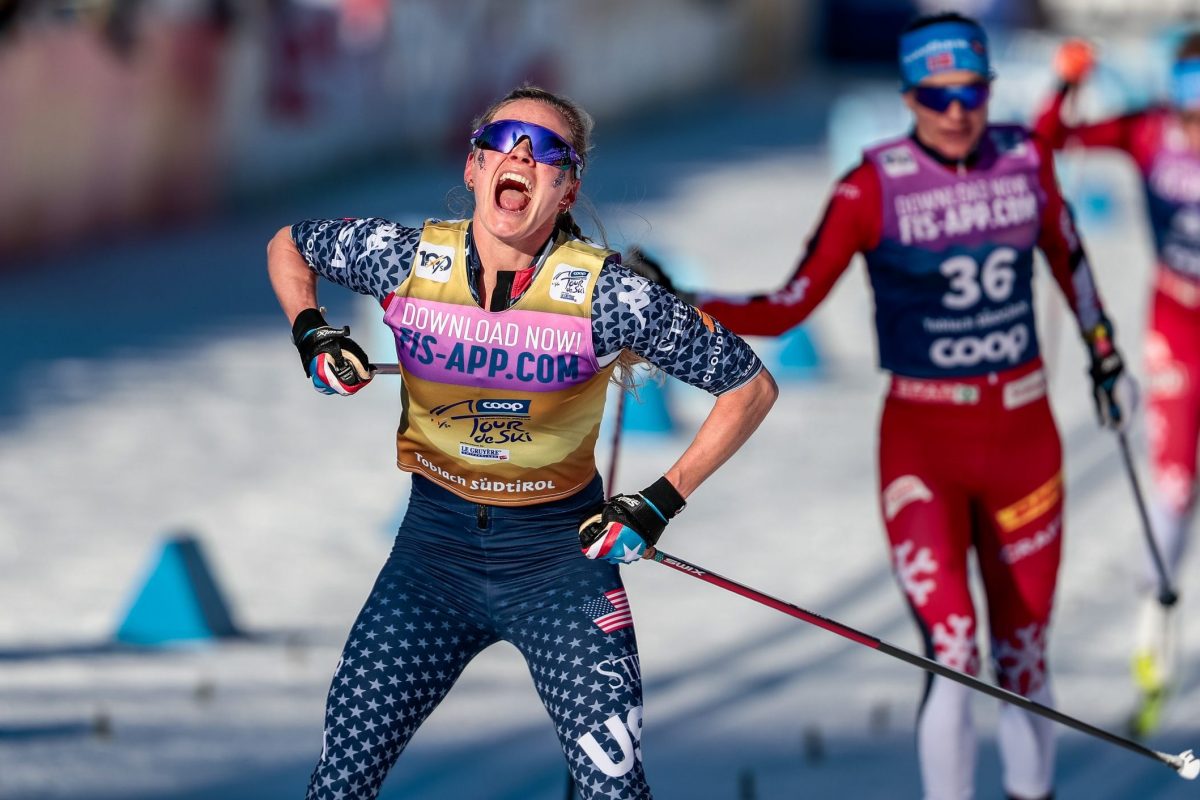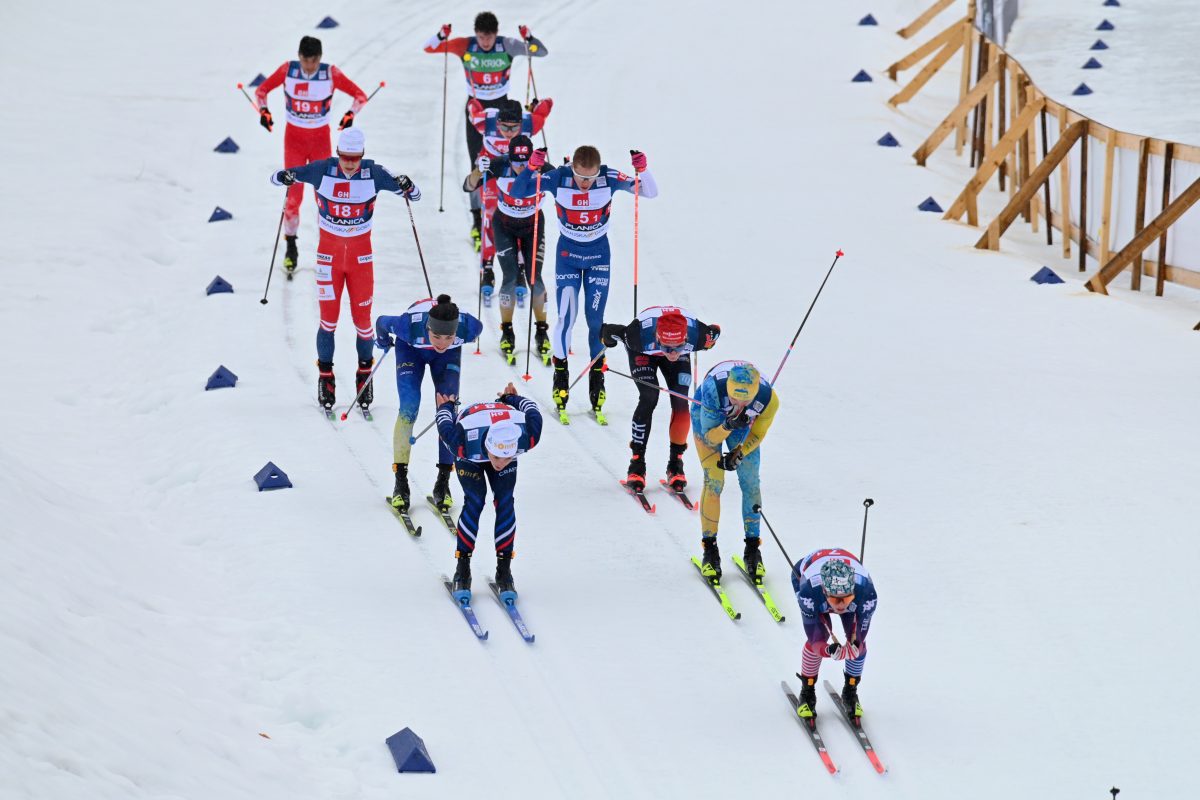Nancy Fiddler was one of North America's top female skiers from 1987 to 1993. She captured 14 National Championship titles, has a half dozen top twenty results in World Cup and World Championship events, participated in two Olympic Winter Games and four World Championships in her career. Her specialty was the classic technique and many times she took the USA to a top five position after the first relay leg in World Cup, Olympic, and World Champiionship races. We contacted Nancy recently and asked her to tell us about her career and what role cross county skiing plays in her life now. Here is what she wrote.
The sport of cross country skiing has been a big part of my life since I was 19 years old, and a sophomore at Bates College. An alpine skier, I did not pick up cross country skiing until college, when the Bates team was desperate for warm bodies to fill their red knicker suits. I loved it from the start. I was a field hockey and lacrosse player and knew that I had good coordination and speed, but that I had the potential as an endurance athlete was news to me. I hacked and thrashed on the icy New England ski courses happily for 3 years, earning honors as Division II Champion every year and All American at the AIAW (NCAA) Championships when I was a senior.
I made an effort to stay in skiing after graduating from college, but lacked the guidance and motivation that training with a group offers. It was a tough go on my own, and I dropped out of the sport in 1980 after the Olympic trials. Looking back, I can now see that as a twenty something year old with only a few years of training behind me and very little knowledge of the sport, I hadnât a chance in skiing. It has taken me many years to accept this.
I ended up moving to California, where I met my future husband, Claude. I loved the mountain lifestyle we lived, and found my way back to cross country skiing as an instructor at Bear Valley Nordic. Summers we spent at Tioga Pass climbing and hiking (when I wasnât waiting tables, making beds, or selling gas and knick-knacks at the resort). Claude and I spent lots of time in the mountains backpacking, climbing peaks, and ski mountaineering during this period, and without knowing it, I was building a base for skiing that would help me in years to come. I gravitated to Far West weekend races and found myself able to take the womenâs field fairly easily. Debbi Waldear, an acclaimed Master racer and marathon specialist was good competition in those days.
When the U.S. National Championships came to Royal Gorge in 1986, I went, as a lark. I certainly had no expectations. The first event was the 20 km, in which I placed 7th. I was pretty pleased with myself, but a Norwegian man came up to me after the race and informed me that I had slow skis and asked me whether I would like him to make them faster for the next race. This was the way I met Torbjœrn Karlsen, who was later to become my longtime coach and friend. To make a long story short, I went on to take 3rd in the 5 km and 1st in the 10 km races, all skating that year. No one was more surprised than I was!
I spent the next seven years learning to train, under Torbjœrnâs guidance. It was really what I had needed years before, when I quit racing after college. By this time I was 30 years old, the oldest on the womenâs national team. Claude and I were now living in Crowley Lake, California, which had lots to offer as a high altitude training site, I was to discover. I was now able to train on my own, with the help of Torbjœrnâs detailed training plans. I spent a lot of time at camps during these years, where I could train with my teammates. These camps were essential to my success, and saved me from training in a vacuum. It was good to train with the other women, as it helped me guage how I was doing. I especially enjoyed the company of Leslie Thompson at these camps. Over the years, she proved to be the greatest competition I skied against in this country. We pushed each other in races, and became better skiers for this competition, I believe. It would be too easy to become stagnant without this type of domestic rivalry. Leslie became my constant roommate, and even though we duked it out in the races, we built up a mutual respect and fondness for one other. She was the most supportive teammate I had, and we remain close friends to this day.
I discovered that I loved to race, and this kept me on track and motivated in my training. Everything I did was focused on going faster. Classic skiing suited me best, and the 5 km classic race became my event. I had to work harder in skating and longer races, but I own several skating national titles including a 30 km. In both Olympic Games and three World Championships that I went to, I qualified in and competed in all events.
Ten years after my last Olympics (1992 Games in Albertville), I have an interesting collection of memories of my skiing career. Most of what I remember is the actual racing. This is fortunate, since I withstood some nasty Ski Team politics over the seven year period I was on the national team.
My first Olympics was in Calgary in 1988, and looking back on those races I can see that, though my results were unremarkable, this was the point when I turned a corner mentally and became an international ski racer. I realized that I did not have much time this go-round and needed to get serious. The next year was the World Championships in Lahti, Finland, and I took my new attitude to these races and got a 15th place in the 15 km classic and a 19th in the 30 km skate events. It was just the taste of success I needed to keep me going for the next few years. I knew that I could ski with those women! I knew it on every long rollerski work-out I did subsequently and I knew it every time I chased them up the hill in my imagination during interval sessions.
The basis of my training was lots of easy, level 1 endurance training and high quality interval efforts. I always competed in running races in the summer, and posted a 36 min. 10 km at the Bonne Bell 10 km in Cleveland when I was 35. As compared with the other women on the team, I trained a very high number of hours, on average 700-750, much of which was very easy. I do not believe I did anything unusual in my training, but I know that my success came from staying with the plan Torbjœrn prescribed. I also grew very good at deciding when to push and when to back off according to my feelings. I kept some long backpacking trips in my summer plan, which provided a good way to get base training in while having fun. I doubt that I could have made it throught the summers without those trips, both mentally and physically. I also was fortunate to have snow skiing opportunities every summer and trained in Norway, Austria, and Australia.
Today, I am the mother of a six year old little girl, Laurel. We are still living in Crowley Lake, and I work during the winter months at Tamarack Cross Country Ski Center in Mammoth Lakes. I work for former alpine USST head coach, Ueli Luthi, and run ski programs, train the ski school, and teach private lessons. Skiing is still fun for me. When I retired from skiing in 1993, I vowed I would bring the sport of cross country skiing to Mammoth and the eastern Sierra. There was not a kids program in existence in those days, and so that is where I started. I formed high school and middle school teams in the Mammoth school district, and organized a ski P.E. program for the elementary school. After Laurel was born, I realized that I needed to get a program going for younger children, and so founded the Tamarack Gliders program, for kids 6-10 years old. This year, I have 80 Gliders!
After six years coaching the Mammoth High School team, I turned my efforts to the younger kids and am currently coaching Gliders and P.E. weekly. I have also been involved with Far West junior skiing and am assistant Far West junior coach under former Olympic biathlete Glenn Jobe. I love this work, as I get contact with so many talented young skiers. Every summer I host a dryland camp in the eastern Sierra, and I have travelled with the Far West kids to many camps and Junior Olympic competitions.
I am very involved with Master level skiing these days, as well. I have a three level Masters program at Tamarack with 65 participants this winter. My advanced level skiers include Masters world and national champion Carolyn Tiernan, among others. I began with Carolyn and a handful of high end Masters about five years ago, but have since expanded the program to include beginner Masters. These skiers may not be racing yet, but they are a vital part of our ski community here. We have a good time in my sessions, which keeps my Masters coming back year after year. With these skiers, I focus on technique mainly. I have become quite fascinated with skiing technique and am constantly learning new ways to teach this incredible sport. We do lots of drills!
I race only occasionally these days, and ski as much as I can, which never seems like enough! I am lucky to train 4-7 hours a week and enjoy every minute of it. I believe that this is the key to success in cross country skiing. It is important to love every aspect of the sport and to make the training a part of your lifestyle. I know I will always be a skier. My advice for Masters and Juniors is to have fun with your training, and to stick with a simple plan from day to day, week to week, and year to year. Make sure you keep activities you like in your training plan to keep it interesting. If you love cycling or kayaking, make sure you incorporate these activities in your plan.
There are many ways to train for skiing, but the best results come from consistent, well planned training all the months of the year. Choose your goals and then make a plan that works for you. And never forget, be patient; good results require an investment of years. Create a lifestyle that keeps you focused on your training. I intend to keep cross country skiing in my life for many years to come. There is life after racing, and I like to believe that I am living it.



